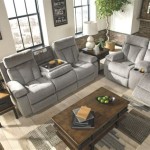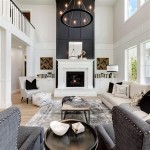Natural Wood Dining Room Decor: A Guide to Timeless Elegance
The dining room serves as a focal point of any home, a place where meals are shared, memories are made, and connections are strengthened. Creating a welcoming and stylish dining space is, therefore, of utmost importance. Natural wood dining room decor offers a timeless aesthetic that blends warmth, elegance, and durability. Its appeal transcends fleeting trends, offering a classic foundation that can be adapted to various styles. This article will explore the key elements of incorporating natural wood into a dining room, providing guidance on selecting materials, arranging furniture, and enhancing the overall ambiance.
Choosing the Right Wood Species
The foundation of a natural wood dining room lies in the selection of the wood species. Different types of wood offer varying characteristics in terms of grain, color, durability, and cost. Considerations for wood selection extend beyond mere aesthetics; the wood's ability to withstand daily use and potential wear and tear plays a crucial role in the long-term investment. Several popular choices exist, each with distinct advantages.
Oak is a widely favored option, known for its strength, durability, and distinctive grain patterns. It is a versatile wood that can accommodate various finishes, from light stains that highlight its natural beauty to darker tones that create a more formal atmosphere. Maple provides a fine, even grain and a lighter color, often chosen for a more contemporary or minimalistic design. It is a hard wood, making it suitable for tables and chairs that endure frequent use. Cherry wood offers a rich, reddish-brown hue that deepens over time, adding a touch of luxury and warmth to the dining area. Its smooth grain and elegant appearance make it a sophisticated choice for formal dining settings. Walnut, with its dark, chocolate-brown color and striking grain, is a premium option that exudes sophistication and richness. It is strong and durable, often used for crafting heirloom-quality furniture. When choosing a wood species, consider the overall style of the dining room, the desired level of durability, and personal preferences regarding color and grain.
Selecting Furniture: Tables, Chairs, and Storage
The furniture pieces are essential components of a natural wood dining room. Careful selection of tables, chairs, and storage units is paramount for the overall design. The dining table is typically the centerpiece, and its size and shape should be proportionate to the room's dimensions and the household's needs. Rectangular tables are conventional and often work well in most spaces, providing ample seating. Round tables facilitate conversation and create a more intimate setting, particularly suitable for smaller dining areas. Oval tables offer a blend of these two shapes. Consider the table's height when selecting chairs. A comfortable chair should allow for proper posture and easy access to the table surface.
Dining chairs should complement the table in terms of style and material. Solid wood chairs provide a cohesive look and a sense of stability. Upholstered chairs add an element of softness and comfort. Consider the upholstery fabric's durability and resistance to stains. Sideboards, buffets, and china cabinets are valuable storage options that add both functionality and style to the dining room. These pieces offer space for storing tableware, linens, and serving utensils, keeping the dining area organized and clutter-free. Choose furniture pieces that complement each other in terms of wood species, finish, and design. Consider the room's overall aesthetic when selecting the specific pieces.
Incorporating Natural Elements and Textures
Enhancing the natural wood elements with other organic materials creates a cohesive and inviting dining room atmosphere. Incorporating natural textures and elements adds depth, warmth, and visual interest to the space. Woven rugs, crafted from materials like jute or sisal, introduce texture underfoot and define the dining area. Linen or cotton tablecloths and napkins contribute a soft, tactile element, adding a layer of elegance. Incorporating elements from nature adds life to the space. Fresh flowers or potted plants bring color and freshness to the table, while wooden bowls or platters can complement the dining table’s design. Consider using decorative elements like wooden candle holders, serving boards, and decorative objects to enhance the overall aesthetic. These details serve to enrich the space, complementing the wood furniture and creating a harmonious blend of natural textures.
Lighting and Color Palette
Lighting and color play a crucial role in setting the ambiance of a dining room. The correct lighting enhances the natural beauty of the wood and shapes the overall atmosphere. A central chandelier or pendant light above the dining table creates a focal point and provides ambient lighting. Consider dimmable lights to adjust the illumination levels for different occasions. Accent lighting, such as sconces or table lamps, can add warmth and create a more inviting atmosphere. The color palette should complement the natural wood tones. Neutral colors, such as whites, creams, and grays, provide a clean and sophisticated backdrop, allowing the wood to stand out. Earth tones, such as browns, greens, and blues, enhance the connection to nature and create a warm and inviting atmosphere. Pops of color may be added through artwork, textiles, and accessories to add visual interest and personalization. The ideal color scheme should reflect the overall design and create a pleasing environment.
Accessorizing and Styling the Space
Accessories serve to complete the look of the natural wood dining room, adding personality and style to the design. These details contribute to the room's overall aesthetic and create a cohesive look. Choose artwork that complements the dining room's style and color palette. Consider landscape paintings or abstract pieces that reflect the natural theme. Mirrors can visually expand the space and reflect light. Decorative objects, such as vases, sculptures, and bowls, add visual interest and personality. Place a centerpiece on the dining table to create a focal point. Consider using a combination of fresh flowers, candles, or a decorative bowl filled with fruit. Textiles, such as placemats, runners, and cushions, add texture and color to the space. Select textiles that complement the wood tones and the overall design scheme. Arrange accessories thoughtfully, ensuring a balance between aesthetics and functionality.

The Best Of 2025 Interior Design Trends Going Into French Country Dining Room Wood Table Rooms

Home Design Ideas Decorating Modern Homes Decor Minimal Rustic Dining Room Ta House Interior

Britain Rustic Teak Wood 11 Piece Dining Room Set Solid Wooden Table Designs

Natural Wood Dining Table With Black U Shaped Legs Modern

A Large Dining Table Is Made Of Suar Wood With Live Natural Edge The Thickness Counte Большие обеденные столы Украшения обеденного стола Дизайн столовой

Modern Transitional Dining Room Decor Taryn Whiteaker Designs

Look I M Loving Round Natural Wood Dinning Tables Lauren Nelson Bamboo Dining Chairs Modern Farmhouse Room Transitional

Modern Rustic Dining Room Crate Barrel

Farm Table Design Ideas Beautiful Solid Wood Dining Tables

Modern Transitional Dining Room Decor Taryn Whiteaker Designs
Related Posts







